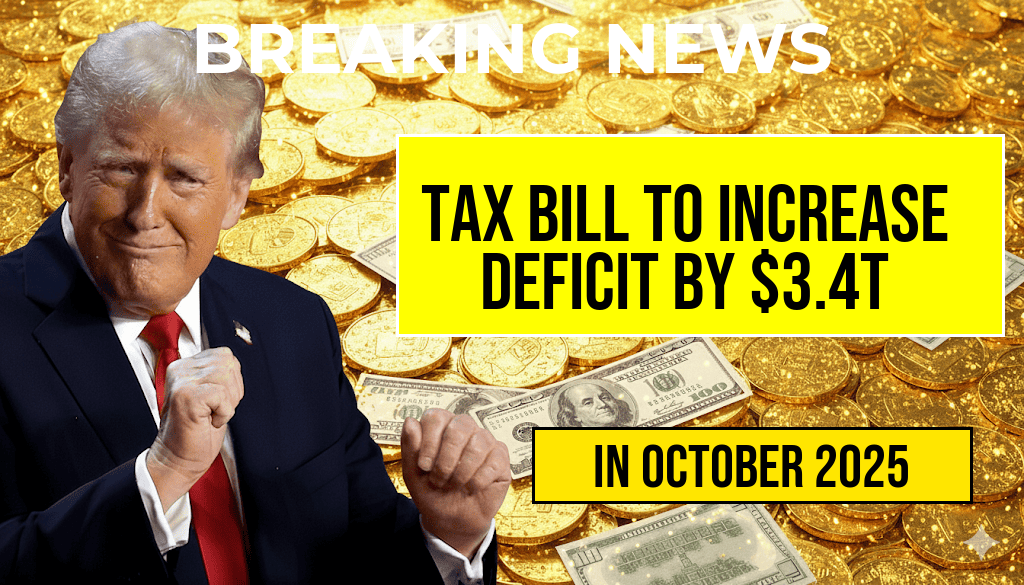The proposed legislation popularly dubbed the “One Big Beautiful Bill” has sparked widespread concern among fiscal policymakers and economic analysts. Critics warn that the bill could result in a deficit increase of approximately three point four trillion dollars, significantly impacting the nation’s financial stability. The legislation aims to implement a broad array of tax cuts, spending increases, and new entitlement provisions, but experts argue that the projected revenue shortfalls and increased obligations could outweigh the benefits. As lawmakers debate the bill’s merits, the potential long-term implications for federal debt and economic growth remain central to the conversation.
Key Provisions of the Legislation
Tax Cuts and Incentives
- Reduction of corporate tax rates from 21% to 15%, intended to stimulate business investment.
- Expansion of individual income tax brackets, providing relief primarily to middle- and upper-middle-class taxpayers.
- Introduction of new tax credits aimed at supporting renewable energy initiatives and technological innovation.
Spending Increases and New Entitlements
- Significant funding allocated to infrastructure projects nationwide, including transportation and broadband expansion.
- Enhanced social safety net programs, such as increased funding for Medicaid and child care subsidies.
- Long-term commitments to defense and national security, with substantial budget increases over previous levels.
Fiscal Impact and Expert Analysis
| Component | Estimated Cost (Trillions of Dollars) |
|---|---|
| Tax Cuts | 1.8 |
| Spending Increases | 1.2 |
| Entitlement Expansion | 0.4 |
| Total | 3.4 |
Economists from leading think tanks have raised concerns that the bill’s combined fiscal measures could cause the federal deficit to swell by $3.4 trillion over the next decade. According to a recent analysis by the Congressional Budget Office (CBO), the revenue losses from the tax cuts are projected to outweigh the increased government spending, leading to a substantial rise in national debt. The CBO’s report underscores that without offsetting revenue streams or expenditure reductions, the legislation could accelerate the trajectory of the U.S. debt to levels not seen since World War II.
Political Reactions and Public Debate
Supporters’ Perspective
Proponents argue that the bill aims to revitalize economic growth by incentivizing private investment and reducing tax burdens on middle-class families. They contend that the infrastructure investments will create jobs and modernize critical systems, ultimately fostering a more competitive economy. Several lawmakers emphasize that the bill’s long-term benefits could offset initial deficits through increased productivity and higher tax revenues from a thriving private sector.
Opposition Concerns
Opponents warn that the legislation’s deficit-expanding measures could undermine fiscal responsibility and lead to higher interest rates. Critics from across the political spectrum argue that the bill lacks sufficient spending controls and fails to address the underlying structural deficits. Several fiscal watchdog groups have called for more transparent budgeting and emphasize that ballooning debt could limit future policy options, especially in times of economic downturns.
Historical Context and Future Outlook
Historically, large-scale tax cuts combined with increased spending have often led to short-term economic boosts but have also contributed to long-term debt accumulation, as seen in past administrations’ efforts to stimulate growth. The current proposal echoes some of those trends, with analysts warning that the bill’s projected fiscal impact could challenge the government’s ability to fund essential services without additional borrowing.
As the debate continues, the legislative process will determine whether modifications are made to mitigate the projected deficit increase. Experts advise monitoring the bill’s implementation closely, emphasizing that sustainable fiscal policies will be crucial for maintaining economic stability in the coming decades.
For an in-depth look at the history of U.S. fiscal policy and debt trends, visit Wikipedia’s page on U.S. public debt. To explore the economic implications of tax legislation, Forbes offers detailed analyses at Forbes.com.
Frequently Asked Questions
What is the main concern highlighted in the article titled “Taxpayer Alert: The ‘One Big Beautiful Bill’ Will Increase the Deficit by Three Point Four Trillion Dollars”?
The primary concern is that the ‘One Big Beautiful Bill’ is projected to increase the federal deficit by three point four trillion dollars, raising concerns about long-term fiscal sustainability.
How will the proposed bill impact the national deficit and future government spending?
The bill is expected to significantly raise the national deficit by $3.4 trillion, which could lead to increased government debt and potentially affect fiscal policies in the future.
What are the potential economic implications of this deficit increase?
An increase of this magnitude may result in higher interest rates, inflationary pressures, and could limit the government’s ability to fund public programs or respond to economic downturns.
Who are the primary stakeholders affected by the passage of this bill?
Stakeholders include taxpayers, government agencies, public service programs, and fiscal policymakers who must consider the long-term impacts of increased deficit spending.
What alternatives or measures are suggested to address the concerns about the bill’s impact on the deficit?
Experts suggest cost containment measures, revenue enhancements, and budget reforms to mitigate the deficit increase and ensure fiscal responsibility.

Leave a Reply